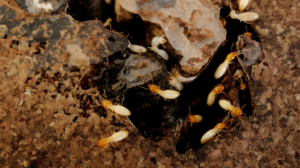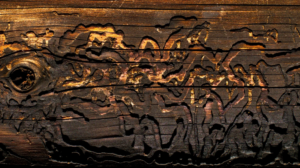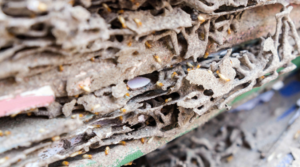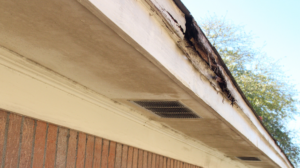Paper wasps are vespid wasps that gather fibers from dead wood and plant stems which they mix with saliva and use to construct water resistant nests made of grey or brown papery material. Wasp colonies die off during the winter months not because of the cold but because of the starvation for a lack of food. Only sexually matured queens overwinter by hibernating.
And even then, most of them don’t survive the winter to start new colonies. Spiders are responsible for killing a large number of paper wasps queens. Contrary to popular beliefs, cold harsh winters are usually good for wasp populations. During mild or warm winters, the queens venture out of hibernation in search of food which is usually not available. But with long harsh winters, the queens stay asleep until plants start to flower and there is ample nectar to support her new colony.
The paper wasps lifecycle can be divided into four stages. But these stages are not clearly defined in nature because the different stages are weather dependent and may vary for as much as 3 – 4 months. In early fall, worker paper wasps begin to die off which is what most people assume happens to wasps in winter.
However, certain females – those destined to become the future queens of a new colony- seek a protected place to overwinter. In advance of the first hard frost, their internal clock tells them it is time to investigate various harborage sites, which might be under logs, between deck floor joists, inside chimneys, around the top of windows or door frames.
Female paper wasps are notorious for ending up inside the house. They enter through small crevices near the roofline while searching for potential overwintering spots. Once inside, they often hide in wall voids or inside warm attics. There they enter a state of diapause, suspending their development throughout the coldest months.
This means homeowners most likely won’t see them until spring – unless there is an unusual period of warmer weather during which time the wasps become active again and look for an escape route leading back outside to start a new nest. The good thing for those who encounter these pests inside the home during winter months is that the wasps are usually sluggish and can be easily removed. However, if a large population is discovered, it is best to call a licensed pest control professional for safe disposal of the pests.
While not aggressive by nature, paper wasps will sting if they are disturbed or feel threatened. Their stings are painful and may result in allergic reactions to those sensitive to insect stings. It is, therefore, advisable to avoid direct confrontation with the wasps until a trained professional is called.
The key to keeping paper wasps from moving indoors – not just in the winter but all year round – is to identify and seal all openings that lead to the outside of the home. The National Pest Management Association (NPMA) recommends using a silicone based caulk, steel wool or a combination of both to fill cracks and large holes in the home’s foundation.
Homeowners should pay special attention to porch ceilings, around roofs, soffits, attic rafters, windows, and door frames, as these are places where paper wasps congregate. It is also advisable to work with trained an licensed pest control professionals to conduct a thorough outside preventive treatment before the cool weather sets in.









